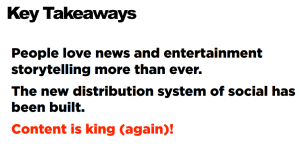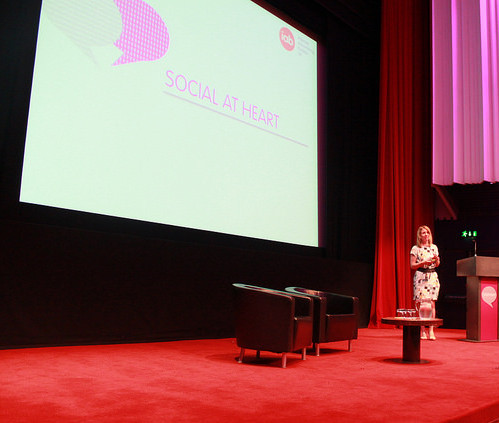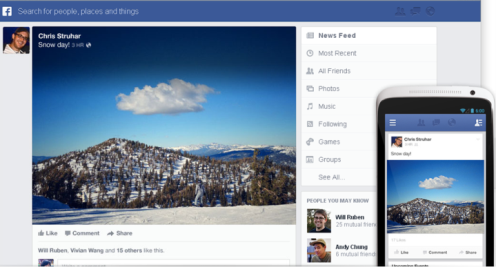What does it mean to be Social at Heart?
11 Jul, 14 | by BMJ
Last week I attended the IAB annual social media event; ‘Social at Heart’. Here’s a round up of key messages presented by an impressive group of speakers, including representatives from BuzzFeed, Twitter, Google and UNICEF.
Social & Content
Will Hayward, Vice President, Advertising at BuzzFeed
- BuzzFeed receives 75% of visits from social platforms and 50% from mobile
- It’s better to target small niche groups of people than a broad audience – they are much more likely to share your content with their peers

- Sharing is the new system of distribution and brands must think about how and why content spreads
- Memes = Participatory Mass Media
- “Start with the consumer, do something special” – what are we actually offering consumers that will interest them?
- Creating content that is relevant will always succeed
- Do not be the person at the party that only talks about themselves
- Ensure you’re engaging with your audience on their terms in an environment that is right for them
Social & Social
Paul Guerrieria, Digital Planner, Google & Will Scougal, Brand Strategy & Creative, Twitter
- Google+ is not just a social platform but a social layer that integrates all Google products
- Hashtags are now searchable on Google
- Google+ content from brands is pulled onto the Search Engine Results Page for free but there are also links out to relevant hashtags on Twitter and Facebook
- Plan for the moment –> Enhance in the stream –> Keep it simple
- Be proactive around key events but also reactive to events as they happen
Social & Good
Laila Takeh, Digital Strategist and Leader, Unicef
- 479,050 tweets and £5.3m raised during Soccer Aid 2014
- For UNICEF, social = content + influencers + paid media
- Twitter cards were the most successful engagement trigger in paid social during Soccer Aid
- Real-time Google Analytics gave team up to date view of what was and wasn’t working – enabled them to be as fluid and responsive as possible
- UNICEF encourages its employees to tweet in a personal capacity
Social & Devices
Alex Kozloff, Head of Mobile, IAB UK
- 19% of the top 50 UK retailers with a mobile site
have built one that is not transactional - Q4 2013 – 53% of Facebook revenue comes from mobile
- 4% of the top 50 UK retailers don’t have a transactional PC website
- 19% of the top the top 50 UK retailers with a mobile site, have built one that is NOT transactional
- 52% of the top 50 UK retailers with a mobile app, have built one that is NOT transactional
Social & Video
Oliver Smith, Managing Director, EMEA at Unruly
- Celebrities do not drive online ad sharing
- No creative device drives sharing more than any other, with the exception of personal triump. Focus on emotions, not creative devices
- Poorly branding your ad is like throwing away your marketing budget. The average branded video takes 30 seconds to reveal the brand. There is no correlation between level of branding and shareability
- Pack an emotional punch – videos that elicit a strong emotional response are twice as likely to be shared
Celebs, babies,cats etc amplify sharing but don’t cause it. Personal triumph & emotion provokes sharing says @unrulymedia #iabuk— Laila Takeh (@spirals) July 3, 2014







